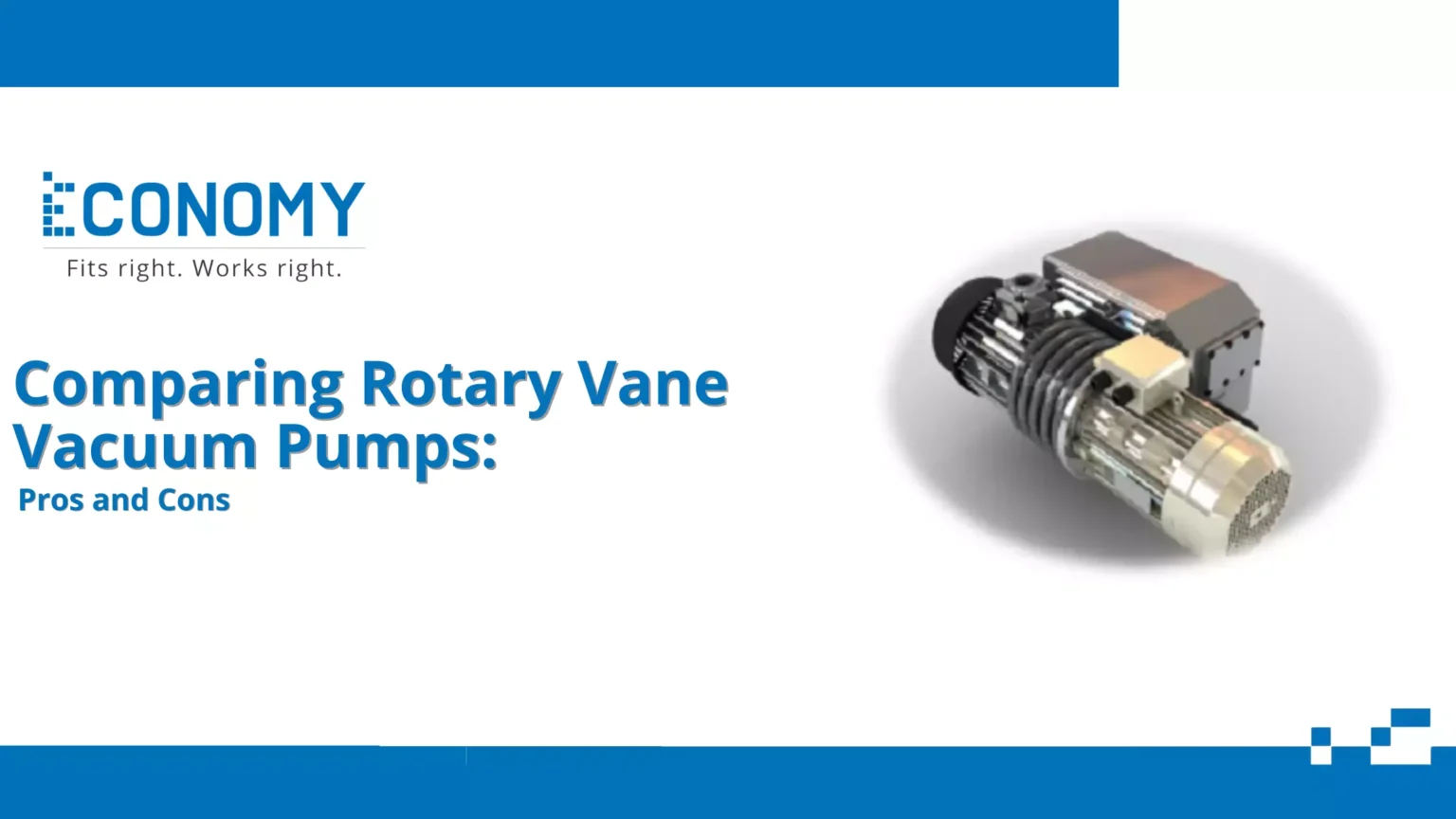Rotary Vane Vacuum Pumps vs. Other Vacuum Technologies: Pros and Cons
Introduction To Vacuum Technologies
In the diverse world of vacuum technologies, various methods are employed to create and maintain a vacuum—an environment with pressures significantly less than atmospheric pressure. These technologies are vital across numerous industries, including pharmaceuticals, food processing, electronics, and scientific research, each requiring specific vacuum conditions to optimize performance. At the core of these technologies are various types of vacuum pumps, devices designed to remove gas molecules from a sealed volume in order to create a partial vacuum.
Understanding different vacuum technologies begins with identifying the type of vacuum required, ranging from rough vacuum to high or ultra-high vacuum. Rough vacuum applications typically involve processes like packaging or filtration; they often use rotary vane pumps or diaphragm pumps. High and ultra-high vacuum applications, crucial for sensitive processes such as semiconductor manufacturing or surface analysis, demand more sophisticated technologies such as turbomolecular or cryogenic pumps.
Rotary vane pumps, one of the oldest and most widely used vacuum technologies, are praised for their reliability and efficiency in achieving low to medium vacuum levels. Yet, as vacuum technology has advanced, other pump types have emerged, each offering unique advantages and addressing specific niche requirements. This diversity allows industries to select the most appropriate technology based on factors such as desired vacuum level, operational cost, maintenance requirements, and industry-specific regulations.
Overview Of Rotary Vane Vacuum Pumps
Rotary vane vacuum pumps are one of the most widely used types of vacuum pumps, known for their reliability, efficiency, and versatility across various industrial applications. These pumps operate by employing a series of vanes mounted on a rotor, which is positioned within a cavity. As the rotor spins, the vanes slide in and out, trapping volumes of air and compressing them towards the exhaust, thereby creating a vacuum.
This design enables rotary vane vacuum pumps to achieve significant levels of vacuum, making them suitable for processes that require medium to high vacuum pressure.
One of the primary advantages of rotary vane vacuum pumps is their robust construction, which allows for continuous operation without significant maintenance. They are particularly favored for their compact design and ability to handle both gases and vapors efficiently. Additionally, these pumps are relatively quiet compared to other vacuum technologies, making them suitable for environments where noise levels are a concern.
However, rotary vane vacuum pumps also have certain limitations. They typically require oil for lubrication and sealing, which can lead to contamination in sensitive applications. Furthermore, these pumps might not be the most energy-efficient option available, particularly when compared to more modern vacuum technologies like turbomolecular or dry screw pumps. Despite these drawbacks, the combination of durability, cost-effectiveness, and reliable performance makes rotary vane vacuum pumps a staple choice in numerous industrial settings.
Advantages Of Rotary Vane Vacuum Pumps
Rotary vane vacuum pumps offer several distinct advantages that make them a popular choice in various industrial and laboratory applications. One of the primary benefits is their ability to deliver consistent and reliable performance. These pumps are known for their capacity to maintain a steady vacuum level over extended periods, making them ideal for processes that require sustained vacuum conditions. Their robust design contributes to their reliability and durability, allowing them to operate efficiently even in demanding environments.
Their relatively simple and compact design is another notable advantage. This simplicity facilitates easier maintenance and reduces the likelihood of mechanical failures. The fewer moving parts in rotary vane pumps compared to more complex systems contribute to their lower operating costs and longer service life.
Rotary vane vacuum pumps are also versatile, with the capability to handle both low and medium vacuum applications. This versatility broadens their applicability across different industries, including chemical manufacturing, food processing, and HVAC systems. Additionally, they operate relatively quietly, minimizing noise pollution in workplaces where noise can be a significant concern.
Limitations Of Rotary Vane Vacuum Pumps
Rotary vane vacuum pumps are widely used in various industrial and laboratory applications due to their robust performance and relatively simple design. However, despite their advantages, these pumps have certain limitations that need to be considered. One significant drawback of rotary vane vacuum pumps is their sensitivity to particulates and vapor contamination. Because they rely on a rotor and vane mechanism to create a vacuum, particulate matter or contaminated vapors can cause significant wear and tear on the moving parts, leading to reduced efficiency and the need for frequent maintenance.
Furthermore, rotary vane pumps typically require oil for sealing and lubrication, which carries its own set of challenges, including the potential for oil contamination in the vacuum system and the regular necessity of oil changes. This reliance on oil also means that rotary vane pumps are not ideal for processes requiring oil-free environments, such as certain high-purity or cleanroom applications. Additionally, these pumps can produce higher levels of noise and vibration compared to other vacuum technologies, which can be a concern in noise-sensitive environments.
Comparison With Other Vacuum Technologies
When comparing rotary vane vacuum pumps to other vacuum technologies, several important distinctions arise regarding efficiency, maintenance, cost, and suitability for specific applications. Rotary vane pumps, known for their compact design and robust performance, function using a series of sliding vanes rotating inside a cavity to create vacuum pressure. They are widely appreciated for maintaining consistent performance in a variety of industrial applications, particularly where medium to low vacuum ranges are required.
Their simple design usually translates to lower initial costs and ease of maintenance, making them a cost-effective solution for many users.
However, rotary vane pumps face limitations when pitted against dry vacuum pumps, such as screw or scroll pumps, which can operate without oil lubrication, reducing contamination risk. These dry pumps often serve well in clean applications where a non-contaminating environment is crucial. On the other hand, when compared to turbomolecular pumps, rotary vane pumps fall short in achieving high vacuum levels, as turbomolecular pumps excel in ultra-high vacuum conditions due to their design that leverages high-speed rotating blades.
Conclusion: Choosing The Right Vacuum Technology
In conclusion, selecting the appropriate vacuum technology hinges on understanding the specific needs and constraints of a given application. Rotary vane vacuum pumps offer significant advantages such as consistent performance, cost-effectiveness, and versatility, making them ideal for many industrial and laboratory settings. Their ability to handle both low and medium vacuum processes efficiently is unmatched, and their durability ensures long-term reliability.
However, they may fall short when dealing with applications requiring ultra-high vacuum levels or in situations where contamination needs to be strictly controlled, as they can sometimes release oil vapors.
On the other hand, alternative vacuum technologies like dry screw pumps or diffusion pumps may offer solutions where rotary vane pumps are lacking. For instance, dry pumps, which eliminate the need for oil, are particularly useful in environments where contamination must be avoided, offering a cleaner operation. Diffusion pumps, while requiring more maintenance, excel at achieving extremely high vacuums.






